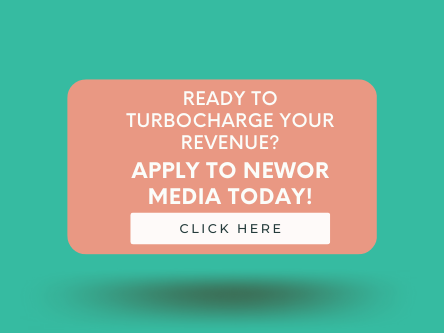
Are your ad revenues falling flat despite having tons of great content? The problem might be your ad strategies. For content-heavy websites, mastering advertising techniques is not just beneficial – it’s essential. Without the right plan in advertising, even the best content can struggle to generate revenue.
Balancing user experience with effective advertising strategies is key to maintaining engagement and maximizing earnings. Understanding and implementing robust advertising strategies can transform a content-heavy website into a profitable platform.
In this blog, we’ll explore crucial ad strategies that content-heavy websites need to succeed, providing practical insights and actionable tips to boost user satisfaction and revenue.
Understanding Content-Heavy Websites
Content-heavy websites feature a vast array of articles, blogs, videos, and other forms of media. These sites prioritize delivering large amounts of information, often structured to provide detailed and comprehensive coverage on various topics.
Key characteristics include high-frequency updates, diverse content types, and extensive archives. Examples of content-heavy websites include news portals, educational resources, and entertainment platforms. The primary goal is to offer valuable content that attracts and retains a broad audience.
However, the following are the key challenges faced by content-heavy websites:
- User Experience Issues: Balancing content richness with easy navigation is challenging. Overloaded pages can deter users, with 38% abandoning sites if the content needs to be better organized.
- Monetization Difficulties: High-quality content requires substantial investment, yet monetizing through ads can disrupt user experience. Striking a balance is vital to sustain revenue.
- SEO and Discoverability: Maintaining high search engine rankings requires constant optimization. Only 25% of users go beyond the first search results page, making SEO crucial.
- Page Load Speed: Heavy content can slow page load times, leading to higher bounce rates. A one-second delay can reduce conversions by 7%.
- Content Management: Managing a vast array of content requires robust content management systems (CMS). Inefficient CMS can lead to inconsistencies and errors in content presentation.
Best Ad Strategies for Content-Heavy Websites
Effective ad strategies are crucial for content-heavy websites to balance user engagement with monetization. Implementing effective advertising techniques ensures that advertisements enhance rather than disrupt the user experience.
Here are the key advertising strategies to consider:
1. Contextual Advertising
One of the most effective ad strategies is contextual advertising, which places ads directly relevant to the content a user is viewing. This method uses algorithms to analyze webpage content and display advertisements that match the page’s topic.
Benefits include higher CTR and improved interaction, as users find these ads more relevant and less intrusive. Additionally, contextual ads can increase ad relevance without relying on personal data, making them a privacy-friendly option.
Let’s discuss the best practices for contextual advertising methods:
- Use keyword targeting to match ads with content.
- Ensure ad relevance to avoid disrupting the user experience.
- Regularly update ad content to keep it fresh and engaging.
- Utilize tools like Google AdSense for automated contextual ad placements.
2. Native Advertising
Another popular ad strategy for content-heavy websites is native advertising, which integrates ads seamlessly into website content, mimicking the format and style of the surrounding material. This strategy increases user trust and engagement, as ads are less disruptive and more engaging.
Native ads can generate 53% more views than display ads. For example, BuzzFeed’s sponsored articles often blend seamlessly with their editorial content, leading to higher engagement rates.
Here are the best practices for native advertising:
- Ensure sponsored content is relevant and valuable to your audience.
- Maintain transparency by clearly labelling sponsored posts.
- Collaborate with brands that align with your website’s ethos and audience interests.
- Integrate ads naturally within the flow of content.
- Use high-quality visuals and storytelling to enhance engagement.
3. Programmatic Advertising
Programmatic advertising, a cutting-edge ad strategy, uses automated technology to buy and place ads in real-time, targeting specific audiences based on data analytics. It increases efficiency and precision in ad placements, making it highly effective.
Automated ad placements save time and resources, allowing site managers to focus on content. Data-driven targeting enhances ad relevance and effectiveness, while real-time bidding ensures competitive pricing and maximizes revenue.
The following are the best practices to implement programmatic advertising:
- Utilize robust data analytics to refine audience targeting.
- Continuously monitor and adjust bids to ensure optimal pricing.
- Integrate programmatic ads seamlessly with your website content.
- Use diverse ad formats to keep the audience engaged.
- Regularly analyze performance metrics to optimize ad strategies.
4. Video Advertising
Similarly, video ads are highly engaging and can convey complex messages quickly, making them an essential ad strategy for content-heavy websites. These ads can complement textual content, providing a dynamic and interactive user experience.
Videos are particularly effective for capturing and retaining user attention, leading to more extended site visits and higher engagement rates. With the growing consumption of video content online, leveraging video ads can significantly enhance the effectiveness of your advertising strategies.
Here are the best practices for video advertising methods:
- Use pre-roll ads to capture attention before video content.
- Ensure videos are mobile-optimized for broader reach.
- Utilize platforms like YouTube and social media for distribution.
- Incorporate clear calls to action to drive conversions.
- Monitor and analyze video ad performance to optimize future campaigns.
5. Sponsored Content
Imagine integrating advertisements that feel like part of your site’s natural flow. That’s the power of sponsored content. This strategy involves partnering with brands to create content that subtly promotes their products or services.
Sponsored content builds credibility and provides genuine value to your audience, making it less intrusive and more engaging. This approach is efficient for content-heavy websites as it blends seamlessly with editorial content.
Here are the best practices for implementing a sponsored content strategy:
- Ensure sponsored content is relevant and valuable to your audience.
- Clearly label sponsored posts to maintain transparency.
- Collaborate with brands that align with your website’s ethos.
- Use high-quality visuals and storytelling to enhance engagement.
- Monitor and adjust based on performance metrics to optimize impact.
6. Affiliate Marketing
Lastly, affiliate marketing is another powerful ad strategy where you promote products or services from other companies and earn a commission for each sale made through your referral. This strategy is particularly effective for content-heavy websites with a loyal audience.
It allows you to monetize your site without compromising user experience, as you can integrate affiliate links naturally within your content. By recommending relevant products or services to your audience, you can build trust and drive conversions, creating a steady revenue stream.
The following are best practices for affiliate marketing ad strategy for your content-heavy website:
- Choose affiliate products that are relevant to your content and audience.
- Integrate affiliate links naturally within your content.
- Provide honest reviews and recommendations to build trust.
- Use tracking tools to monitor performance and optimize strategies.
- Regularly update affiliate links and content to keep it current and engaging.
Advancing User Experience with Ads
Enhancing user experience with ads is crucial for content-heavy websites. Implementing the right ad strategies ensures that ads support rather than disrupt the user experience, maintaining engagement and satisfaction.
Balancing Ads and Content
Balancing ads and content is key to avoiding overloading users. Effective advertising strategies involve placing ads strategically without overwhelming the audience. Strategies in advertising include limiting ad frequency and using non-intrusive formats.
Incorporating lazy loading ads can further enhance the balance by ensuring ads load only when necessary, reducing page load times and improving user experience. Examples of well-balanced websites like The New York Times and BBC demonstrate how to integrate ads seamlessly, maintaining a clean and engaging user experience.
Ad Placement Strategies
Optimal ad placements are crucial for maximizing engagement. Ad strategies should focus on high-visibility areas like headers and sidebars, where users naturally glance. Heatmap tools, such as Crazy Egg and Hotjar, provide insights into user behavior, helping refine advertising techniques to place ads where they are most effective.
Analyzing these patterns ensures ads enhance rather than disrupt the user experience. By understanding where users spend the most time, advertisers can strategically position ads to increase visibility and interaction without compromising the user experience.
Mobile-First Ad Strategies
With the increasing use of mobile devices, mobile-first ad strategies are essential. Mobile optimization ensures ads load quickly and display correctly on various screen sizes. Responsive ad designs adapt seamlessly to different devices, improving user experience.
Incorporating advertising techniques like touch-friendly buttons and scalable images helps maintain engagement and satisfaction across all devices. Optimizing ads for mobile page speed can significantly enhance the mobile user experience by ensuring fast-loading ads, reducing bounce rates, and increasing user retention.
Leveraging Data and Analytics
Leveraging data and analytics is essential for optimizing ad strategies on content-heavy websites. Making data-driven decisions can enhance ad performance, improve user experience, and maximize revenue through precise and informed advertising techniques.
Importance of Data-Driven Decisions
Data-driven decisions rely on key metrics to optimize advertising strategies—track metrics like click-through rates (CTR), conversion rates, and user engagement. Tools for analytics include Google Analytics, Adobe Analytics, and Heatmap software.
These tools help analyze user behavior, allowing you to refine strategies in advertising for better results and higher engagement.
A/B Testing for Ad Optimization
Similarly, A/B testing is crucial for optimizing ad strategies. To conduct A/B tests, create two versions of an ad with slight variations. Measure their performance using analytics tools.
Interpreting results involves comparing key metrics to determine which version performs better. Adjust your advertising techniques based on these insights to continually improve ad effectiveness.
Monetization Strategies for Content-Heavy Websites
Monetizing content-heavy websites requires innovative ad strategies to balance user experience with revenue generation. By employing diverse advertising techniques, these websites can maximize their earnings while maintaining high engagement and satisfaction.
- Subscription Models: Subscription models provide exclusive content to paying members, ensuring a steady revenue stream. Offering tiered memberships and unique benefits attracts loyal subscribers, making this a sustainable monetization strategy for content-heavy websites.
- Sponsored Content: Sponsored content involves collaborating with brands to create subtle promotional content. This method enhances credibility and engagement while generating revenue. Clear labeling and relevant partnerships are essential for maintaining trust and effectiveness.
- Affiliate Marketing: Affiliate marketing promotes products or services from other companies, earning a commission per sale via referral links. This strategy works well for websites with loyal audiences, integrating seamlessly within content for effective monetization.
- Display Advertising: Display advertising places banner ads in high-visibility areas. Using tools like Google AdSense, websites earn revenue from ad impressions or clicks. Effective placement and balance with content are crucial for success.
- Native Advertising: Native advertising integrates ads that match the surrounding content’s form and function. This approach boosts user engagement and trust as ads blend seamlessly with editorial content, enhancing overall monetization efforts.
- Donations and Crowdfunding: Donations and crowdfunding appeal directly to the audience for financial support. Websites with dedicated communities can encourage contributions by offering incentives like exclusive content or early access, fostering regular support.
Avoid Common Pitfalls
Avoiding common pitfalls is essential when strategizing ad strategies for content-heavy websites. Here are key mistakes to avoid that help in maintaining user engagement and maximizing revenue:
- Overloading with Ads: Too many ads can overwhelm users and lead to higher bounce rates—balance ad quantity with content to ensure a pleasant browsing experience and maintain user engagement.
- Ignoring Mobile Optimization: Failing to optimize ads for mobile devices can result in poor user experience. Ensure ads are responsive and load quickly on mobile devices to reach a broader audience effectively.
- Skipping A/B Testing: Not conducting A/B tests can prevent you from identifying the most effective ads. Regularly test ad variations to determine the best-performing strategies and make necessary adjustments.
Boost Your Ad Revenue for Content-Heavy Sites
Effective ad strategies for content-heavy websites involve balancing ads and content, optimizing placements, leveraging data, and using diverse advertising techniques. Avoid common pitfalls by ensuring mobile optimization and listening to user feedback.
Implement these advertising strategies to enhance user experience and maximize revenue. Adapting these strategies in advertising will help you maintain a positive user experience while boosting your website’s profitability. Start integrating these techniques today to see significant improvements.
Start implementing these ad strategies to transform your content-heavy website into a profitable and user-friendly platform.

